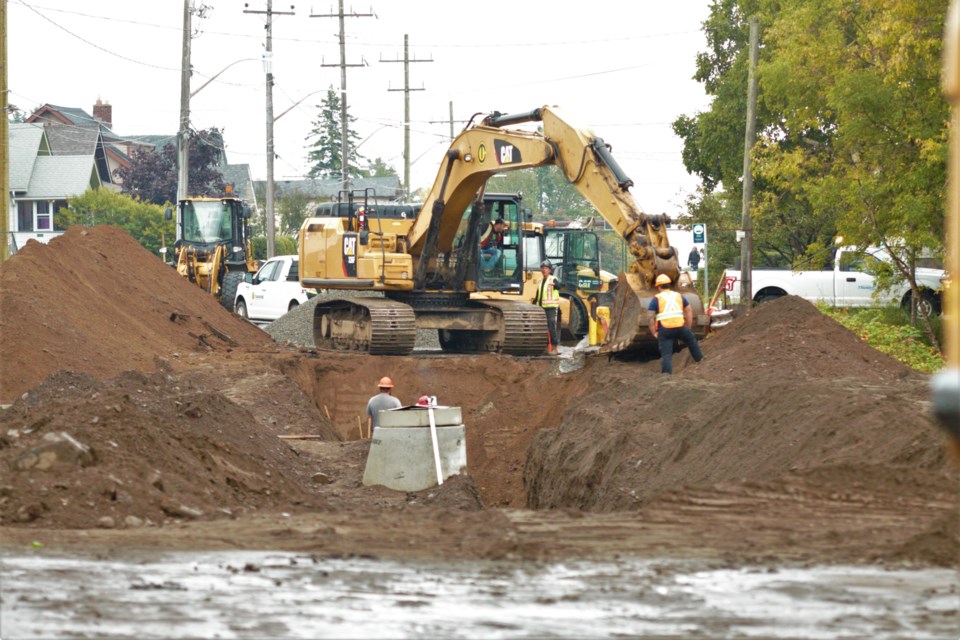THUNDER BAY — The finish line appears to be within reach for a project that has kept one of Thunder Bay’s major arterial routes closed for well over a year, frustrating area residents and thousands of motorists.
The City of Thunder Bay estimates River Street will reopen during the week of Sept. 25, as crews prepare to begin concrete and paving work at the site of a collapsed culvert just north of Algoma Street.
The work replaces a twin culvert that collapsed in early May 2022 during spring flooding. The culvert carries the waters of McVicar Creek beneath the roadway.
The city most recently estimated the project would be complete by mid-September.
That was pushed back from a previous mid-July estimate, itself a delay after the city originally aimed to open the roadway by late spring.
Now completion is in sight, with workers preparing to install a watermain and pour concrete curbs, gutters, and sidewalks next week, said Mike Vogrig, a project engineer with the city.
The following week, crews with Taranis Contracting are expected to pave the street, allowing it to reopen to traffic.
Vogrig said the project had faced some challenges in recent weeks, but said he was happy to see it finally nearing completion.
“After we got the structural backfill done on the culvert, things slowed down on site for one reason or another,” he said. “Now things are picked up and going strong again, so that’s good. It’s too bad we lost a couple of weeks, though.”
Vogrig declined to provide specifics on the reason for recent delays.
He acknowledged overall delays to the contract, which had an official completion date in July that was later extended into August.
“We are behind schedule,” he said. “At the start of the project, things got slowed down much more than we expected — number one, with utilities, relocation of utilities... Some of those items took longer than expected. Then the winter work, it definitely was tougher going than we had expected.”
“When I look at the plans, in terms of how we had the project planned out and the timelines, maybe we underestimated the amount of time it would take to complete. It’s quite a complex project.”
The project had required steps like removing sanitary sewer pipes that had been supported by the culvert, installing a trench box to protect utilities, and building a coffer dam while pouring concrete footings to respect restrictions to in-water work related to fish populations.
Thunder Bay-based Taranis Contracting secured the contract to rebuild the culvert and roadway, with total costs estimated at $2.5 million.
Vogrig said Friday it was too early to confirm if the project would remain on budget.
The twin culverts have been replaced with a single structural multi-plate metal arch, mounted on concrete footings.
Pedestrians and drivers won’t notice much of a difference when passing over the structure, but Vogrig said the design brings advantages.
The new culvert is expected to be more resilient, for example, with its thicker galvanized steel giving it an expected lifespan of 75 years or more.
The previous culvert was approaching the end of its roughly 50-year life span when it failed.
A report produced by the city earlier this year cited the culvert collapse as one example of how climate change will challenge municipal infrastructure.
The degree of spring flooding in 2022 “would be considered a one in a 100-year event based on ‘historic’ climate conditions,” the report stated.
City staff said the event was caused in part by record snowpacks in multiple area watersheds, and followed other major flooding events in 2008, 2012, and 2016.
